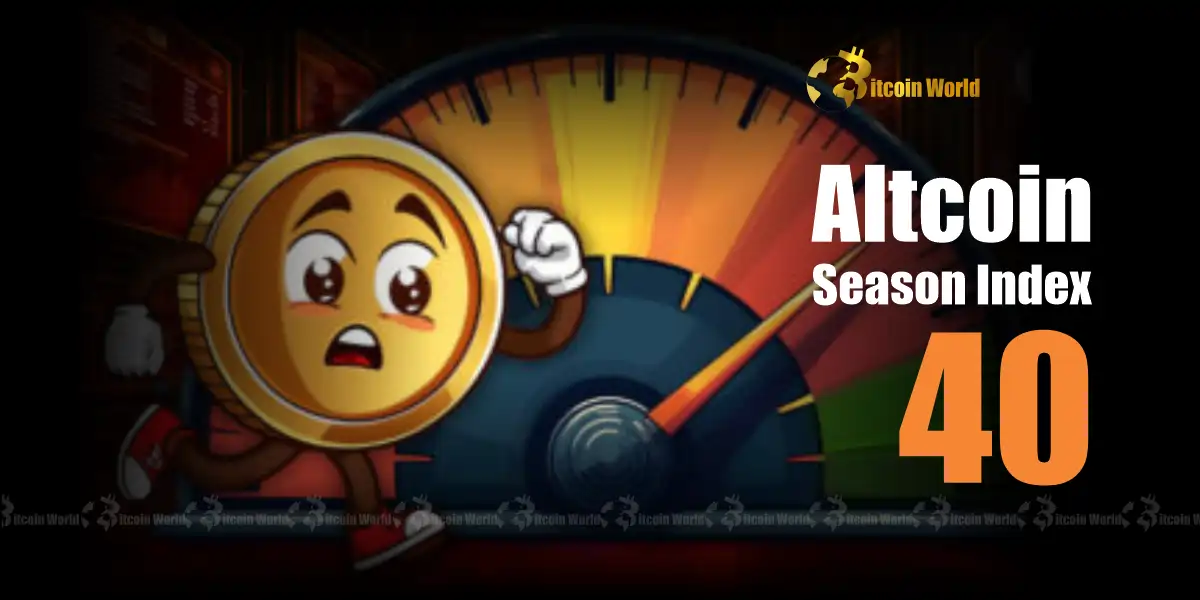BitcoinWorld

Australian Dollar Soars: RBA Rate Cuts Pave Way for Remarkable Gains
For anyone tracking global financial shifts, the recent signals from the Reserve Bank of Australia (RBA) have set the financial world abuzz, particularly concerning the future trajectory of the Australian Dollar. Typically, news of impending interest rate cuts might signal weakness for a currency. However, in a fascinating twist, analysts are increasingly pointing towards potential gains for the Aussie dollar. This counter-intuitive outlook presents a compelling narrative for investors and currency traders alike, suggesting a strategic opportunity emerging from evolving monetary policy.
Understanding the RBA’s Stance on Interest Rates: What’s Driving the Shift?
The Reserve Bank of Australia (RBA) has recently adopted a more dovish tone, signaling that interest rate cuts could be on the horizon. This shift in monetary policy is primarily influenced by several key factors:
- Inflationary Pressures Easing: While inflation has remained sticky, the RBA has noted a clear deceleration in price growth, particularly in goods. Services inflation remains a concern, but the overall trend suggests that the aggressive rate hikes implemented previously are having their intended effect.
- Global Economic Slowdown: Weakening global growth prospects, particularly in major trading partners, put downward pressure on Australia’s export-driven economy. Lowering interest rates can stimulate domestic demand and support economic activity in a challenging external environment.
- Labor Market Dynamics: Although the Australian labor market has remained resilient, there are signs of some softening. The RBA aims to maintain full employment and can use rate cuts as a tool to prevent a significant downturn in job creation.
- Balancing Act: The RBA is navigating a delicate balance between bringing inflation back to its target band (2-3%) and avoiding a severe economic recession. Signaling future cuts allows the RBA flexibility and can help manage market expectations.
Historically, a central bank easing cycle often weakens a currency as it makes domestic assets less attractive to foreign investors seeking higher yields. However, the current scenario for the Australian Dollar is nuanced. Markets have largely priced in these cuts, and the forward guidance provides clarity, reducing uncertainty. Furthermore, if other major central banks (like the Federal Reserve or European Central Bank) are also expected to cut rates, or even cut more aggressively, the RBA’s moves might not be seen as uniquely dovish.
Why is the Australian Dollar Poised for Gains Amidst Rate Cuts?
This seems contradictory, doesn’t it? A currency strengthening when its central bank is cutting rates. Yet, several dynamics explain this intriguing forecast for the Australian Dollar:
- “Sell the Rumor, Buy the News” Phenomenon: A significant portion of the RBA’s expected rate cuts has already been factored into the market. Traders often front-run such announcements, selling the currency in anticipation. Once the cuts are confirmed or clearly signaled, the “news” is out, and the selling pressure can abate, leading to a rebound as speculative positions are unwound.
- Relative Monetary Policy Divergence: The key lies in comparison. If the RBA is perceived to be cutting rates at a slower pace, or starting later, than other major central banks (e.g., the European Central Bank or Bank of England), then the yield differential might not necessarily widen against the AUD. In some scenarios, if the RBA is seen as being more measured, it could even lead to relative strength.
- Commodity Price Resilience: Australia is a major exporter of commodities, including iron ore, coal, and natural gas. Strong global demand for these resources, particularly from China, provides a fundamental underpinning for the Australian Dollar. If commodity prices remain robust or even rise, this can offset some of the negative pressure from lower interest rates.
- Improved Global Risk Sentiment: A more stable global economic outlook, even if it involves slower growth, can boost demand for risk-sensitive currencies like the AUD. As a “pro-cyclical” currency, the Australian Dollar often benefits from improving global risk appetite, especially if concerns about a severe global recession recede.
- Domestic Economic Resilience: Despite the RBA’s caution, the Australian economy has shown remarkable resilience in certain sectors. If the economy avoids a sharp downturn and unemployment remains relatively low, it provides a stable foundation for the currency, even with easing monetary policy.
This complex interplay of factors suggests that while the RBA is signaling a pivot, the market’s interpretation, coupled with underlying economic strengths, could propel the Australian Dollar higher.
What Does This Mean for the AUD Forecast?
Predicting currency movements is an intricate art, but the current signals from the RBA offer significant clues for the AUD forecast. Analysts are now adjusting their models to reflect the likelihood of easing, and the consensus is leaning towards a more constructive outlook for the Aussie dollar in the medium term.
Key elements influencing the AUD forecast include:
- Timing and Pace of RBA Cuts: The market will closely watch the RBA’s actual actions. A slower, more measured pace of cuts than initially expected could provide more significant upside for the AUD.
- Commodity Price Performance: Australia’s strong ties to global commodity markets mean that prices of key exports will continue to play a crucial role. A sustained rally in iron ore or energy prices would be a powerful tailwind for the Australian Dollar.
- China’s Economic Recovery: As Australia’s largest trading partner, China’s economic health is paramount. Any robust recovery in China, especially in its industrial and construction sectors, directly translates to increased demand for Australian resources and thus strengthens the AUD.
- Global Interest Rate Environment: The relative positioning of the RBA’s interest rates compared to other major central banks (Fed, ECB, BoJ) will be critical. If other central banks cut more aggressively, the AUD’s yield advantage could improve, even with RBA cuts.
Many institutional forecasts suggest the Australian Dollar could strengthen against the US Dollar (AUD/USD) in the latter half of the year, potentially moving towards the 0.68-0.70 range or even higher, depending on the factors mentioned above. This positive AUD forecast is a significant shift from earlier predictions of continued weakness.
Navigating the Forex Market: Opportunities in Currency Trading
For individuals and institutions engaged in currency trading, the anticipated movements of the Australian Dollar present compelling opportunities. Understanding the dynamics at play is crucial for formulating effective trading strategies.
Here’s how traders might approach the evolving landscape:
| Strategy | Description | Potential Benefit |
|---|---|---|
| Long AUD Positions | Buying the Australian Dollar against currencies where central banks are expected to cut rates more aggressively or maintain lower rates. | Capitalize on AUD’s relative strength and potential appreciation. |
| Commodity-Linked Trades | Monitoring and reacting to trends in key Australian commodity exports (e.g., iron ore, coal). Strong commodity prices often correlate with a stronger AUD. | Leverage fundamental drivers of the Australian economy. |
| Carry Trades (Cautious Approach) | While RBA cuts reduce the interest rate differential, if other currencies cut even more, or if risk sentiment improves, cautious carry trades could still be considered. | Earn interest rate differential, though less prominent in an easing cycle. |
| Risk-On/Risk-Off Positioning | The AUD is often a “risk-on” currency. If global risk appetite improves, buying the AUD can be a strategy. Conversely, during “risk-off” periods, caution is advised. | Align with broader market sentiment shifts. |
However, it’s vital to remember that currency trading involves inherent risks. Volatility can be high, and unexpected global events or shifts in RBA communication could quickly alter the outlook. Effective risk management, including stop-loss orders and appropriate position sizing, is paramount.
The Broader Impact of Monetary Policy Shifts
The RBA’s evolving monetary policy stance has ripple effects beyond just the Australian Dollar. It influences various aspects of the Australian economy and global financial markets:
- Economic Stimulus: Lower interest rates aim to stimulate borrowing and spending by businesses and consumers, supporting economic growth and potentially boosting employment.
- Inflation Management: While cutting rates, the RBA must remain vigilant about inflation. If inflationary pressures re-emerge unexpectedly, the RBA might have to reverse course, creating market volatility.
- Housing Market: Lower interest rates typically make mortgages more affordable, potentially supporting the housing market, which is a significant component of the Australian economy.
- Equity Markets: Reduced borrowing costs can be positive for corporate earnings, potentially boosting the Australian stock market (ASX). However, a weakening economy (which often precedes rate cuts) can be a drag.
- Global Capital Flows: Changes in Australian interest rates influence the attractiveness of Australian assets to international investors, impacting capital flows into and out of the country.
The RBA’s careful calibration of its monetary policy is a crucial determinant of Australia’s economic health and its standing in the global financial system. The signals of rate cuts are not merely about the currency; they reflect a broader strategy to navigate complex economic currents.
Challenges and Considerations for the Australian Dollar‘s Trajectory
While the outlook for the Australian Dollar appears positive, several challenges and uncertainties could impact its trajectory:
- Global Economic Shocks: Unexpected downturns in major economies, geopolitical tensions, or supply chain disruptions could weigh heavily on commodity prices and global risk sentiment, negatively impacting the AUD.
- Inflation Persistence: If inflation proves more stubborn than anticipated, the RBA might delay or even reverse rate cuts, potentially disappointing market expectations and putting downward pressure on the currency.
- Divergence in Central Bank Policies: While relative policy is a factor for strength, a significant divergence where other major central banks cut rates far less than the RBA, or even hike, could reduce the AUD’s attractiveness.
- Domestic Economic Weakness: Despite current resilience, if the Australian economy experiences a more severe slowdown than forecast, it could undermine confidence in the AUD.
- Commodity Price Volatility: While currently supportive, commodity prices are inherently volatile. A sharp decline could quickly erode the AUD’s fundamental support.
These factors underscore the need for continuous monitoring and adaptive strategies for anyone involved in currency trading or holding AUD-denominated assets.
Actionable Insights for Investors and Traders
Given the nuanced outlook for the Australian Dollar, what should investors and traders consider?
- Stay Informed on RBA Communications: Closely follow RBA statements, minutes, and speeches. Any shift in language regarding inflation, employment, or global outlook can provide crucial clues about future monetary policy.
- Monitor Commodity Markets: Keep a keen eye on the prices of iron ore, coal, and other key Australian exports. Strong commodity prices often signal a stronger AUD.
- Watch Global Risk Sentiment: The AUD is a risk-sensitive currency. During periods of improved global economic outlook and risk appetite, the AUD tends to perform well.
- Compare Relative Central Bank Policies: Don’t just focus on the RBA. Understand the expected actions of the Fed, ECB, BoE, and BoJ. The relative pace and timing of rate adjustments will significantly impact cross-currency pairs involving the AUD.
- Diversify and Manage Risk: As with any investment, diversification is key. For currency trading, utilize robust risk management tools like stop-loss orders and consider position sizing carefully to protect capital from unexpected volatility.
The current environment presents a unique opportunity for those who can navigate the complexities of central bank signals and global economic interdependencies.
The narrative surrounding the Australian Dollar is undergoing a fascinating transformation. What might initially seem like a paradox – a currency strengthening despite anticipated rate cuts – is in fact a testament to the complex interplay of market expectations, relative central bank policies, and fundamental economic drivers. The RBA’s strategic pivot on interest rates, coupled with the “sell the rumor, buy the news” dynamic and resilient commodity markets, paints a remarkably positive AUD forecast. For those engaged in the Forex market, particularly in currency trading, this signals a period ripe with potential. While challenges remain, the prevailing sentiment suggests the Australian Dollar is poised for a significant ascent, making it a crucial currency to watch in the coming months.
To learn more about the latest Forex market trends, explore our article on key developments shaping the Australian Dollar and global interest rates.
This post Australian Dollar Soars: RBA Rate Cuts Pave Way for Remarkable Gains first appeared on BitcoinWorld and is written by Editorial Team





